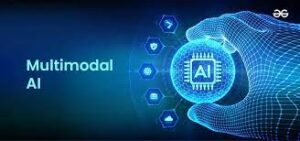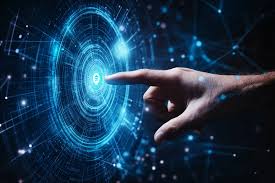
“Empowering the World with Multimodal AI: Bridging Knowledge and Imagination 2025”

In a world constantly evolving with technological marvels, the dawn of Multimodal AI has brought a new chapter of possibilities. Gone are the days when artificial intelligence operated within the boundaries of specific tasks. Today, multimodal AI stands as a transformative force, bridging the realms of diverse data types, unlocking new dimensions of creativity, and fostering unprecedented collaboration between humans and machines.
Multimodal AI represents a groundbreaking leap in the field of artificial intelligence, harmonizing diverse data modalities to unlock a world of possibilities. By integrating text, images, audio, video, and more into a unified framework, this technology transforms the way humans interact with machines and consume information.
Multimodal AI is reshaping industries such as healthcare, where it can analyze medical images alongside patient histories to provide more accurate diagnoses, and education, where it creates immersive learning experiences by merging visual and textual materials. Its potential to revolutionize creative industries is profound, empowering artists, writers, and innovators to collaborate with AI in ways that amplify their imagination and productivity.
Moreover, the capability of multimodal AI to enhance accessibility is a significant milestone—it can break language barriers, convert sign language into text, or narrate visual content for the visually impaired, fostering a more inclusive world. While challenges such as ethical considerations and computational demands remain, the journey of multimodal AI is a testament to humanity’s drive to merge knowledge with creativity. It is not just a technological advancement but a bridge connecting innovation, empathy, and the limitless potential of imagination.
Revolutionizing Communication
What is Multimodal AI?
Multimodal AI refers to the integration of multiple data modes—text, images, audio, video, and beyond—into a single AI model that can process and understand information from various sources. This capability allows for dynamic and context-rich outputs, making interactions more natural and intuitive. For instance, imagine an AI capable of comprehending a written question, analyzing a related image, and responding with a detailed explanation that also includes visual and textual elements. This seamless blending of modalities forms the backbone of multimodal AI.
Bridging Knowledge Gaps

The ability to analyze and interpret data across multiple modalities enables multimodal AI to serve as a bridge between different domains of knowledge. For example:
- Healthcare: Multimodal AI can analyze medical images like X-rays while correlating findings with patient records to provide accurate diagnoses and personalized treatments.
- Education: By integrating text, images, and video, multimodal AI enhances learning experiences, making complex subjects more digestible for students.
- Business: It powers data-driven insights by synthesizing reports, charts, and customer feedback into cohesive strategies for decision-making.
The synergy of multimodal AI fosters a deeper understanding of data, leading to informed decisions and innovative solutions.
Unlocking Creativity and Imagination

Perhaps one of the most exciting aspects of multimodal AI is its ability to spark creativity. Artists, writers, designers, and creators are now exploring new territories with the help of this technology. Here’s how:
- Content Creation: Multimodal AI assists in generating engaging stories, videos, and artwork by blending various inputs, such as written prompts and visual references.
- Collaborative Innovation: It acts as a creative partner, offering fresh perspectives and helping creators overcome creative blocks.
- Cultural Preservation: By integrating historical texts, images, and artifacts, it aids in preserving cultural heritage and bringing history to life.
The possibilities are virtually limitless, and multimodal AI is rewriting the rules of artistic expression.
Enhancing Human-Machine Collaboration

One of the most profound impacts of multimodal AI is its ability to foster intuitive and meaningful human- machine interactions. By understanding and responding to multiple data types simultaneously, these systems feel more humanlike and adaptive in their responses. Consider the following:
- Virtual Assistants: Multimodal AI powers assistants that can understand voice commands, interpret facial expressions, and provide personalized responses, making interactions seamless.
- Customer Support: With the ability to analyze text, audio, and visual cues, it offers empathetic and effective solutions to users’ queries.
- Accessibility: It bridges the gap for differently-abled individuals by combining modalities, such as converting sign language to text or providing descriptive audio for visuals.
In essence, multimodal AI acts as a co-pilot, augmenting human abilities and making technology more inclusive.
Challenges and the Road Ahead

While multimodal AI offers boundless potential, it also presents challenges that need careful consideration. Ethical concerns, data privacy, and the risk of biases in AI models are significant hurdles. Moreover, the computational complexity of integrating multiple modalities requires advanced hardware and software solutions.
As we move forward, the focus must remain on responsible AI development. Transparent practices, continuous learning, and inclusive datasets will play pivotal roles in ensuring the ethical growth of this technology.
Conclusion
Multimodal AI is more than just a technological advancement; it’s a paradigm shift. By bridging knowledge and imagination, it empowers humanity to tackle challenges, explore new frontiers, and foster connections across disciplines and communities. As we stand at the crossroads of innovation, the true power of multimodal AI lies in its ability to amplify human potential and pave the way for a brighter, more harmonious future.
The journey has only just begun. Together with multimodal AI, the possibilities are as boundless as our collective imagination.






